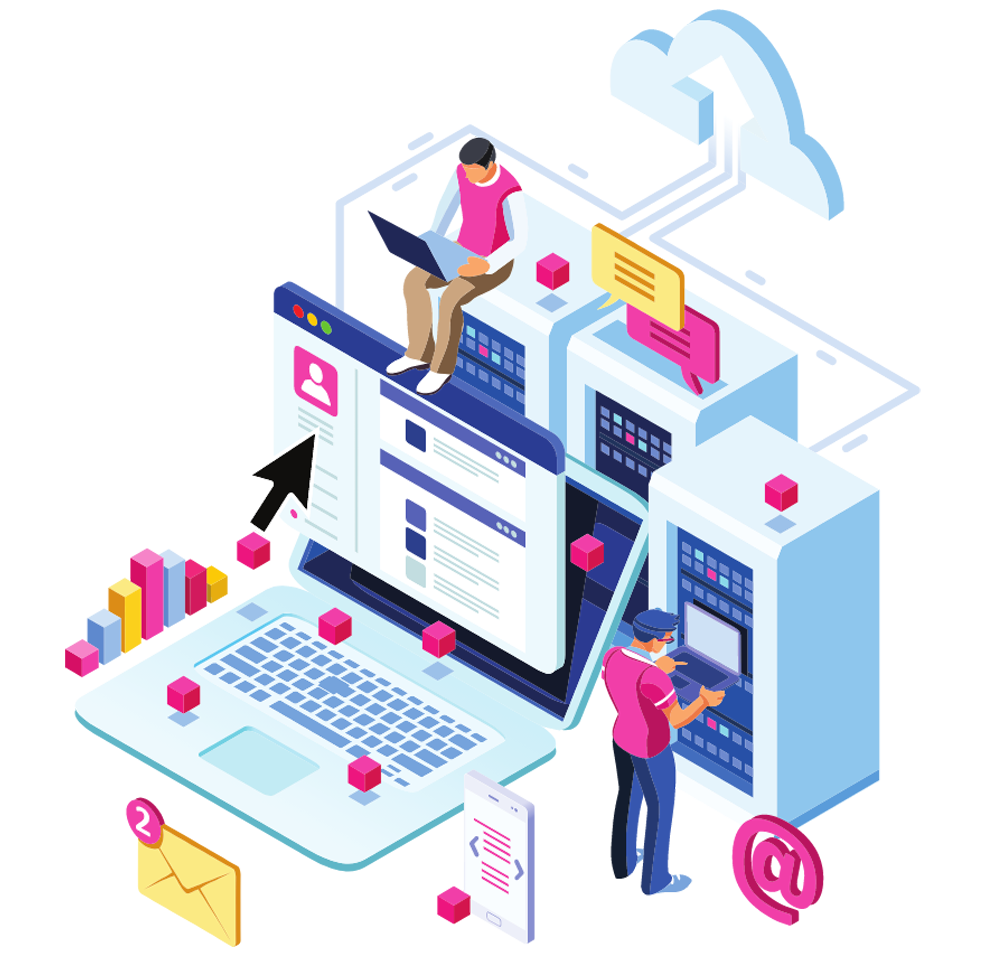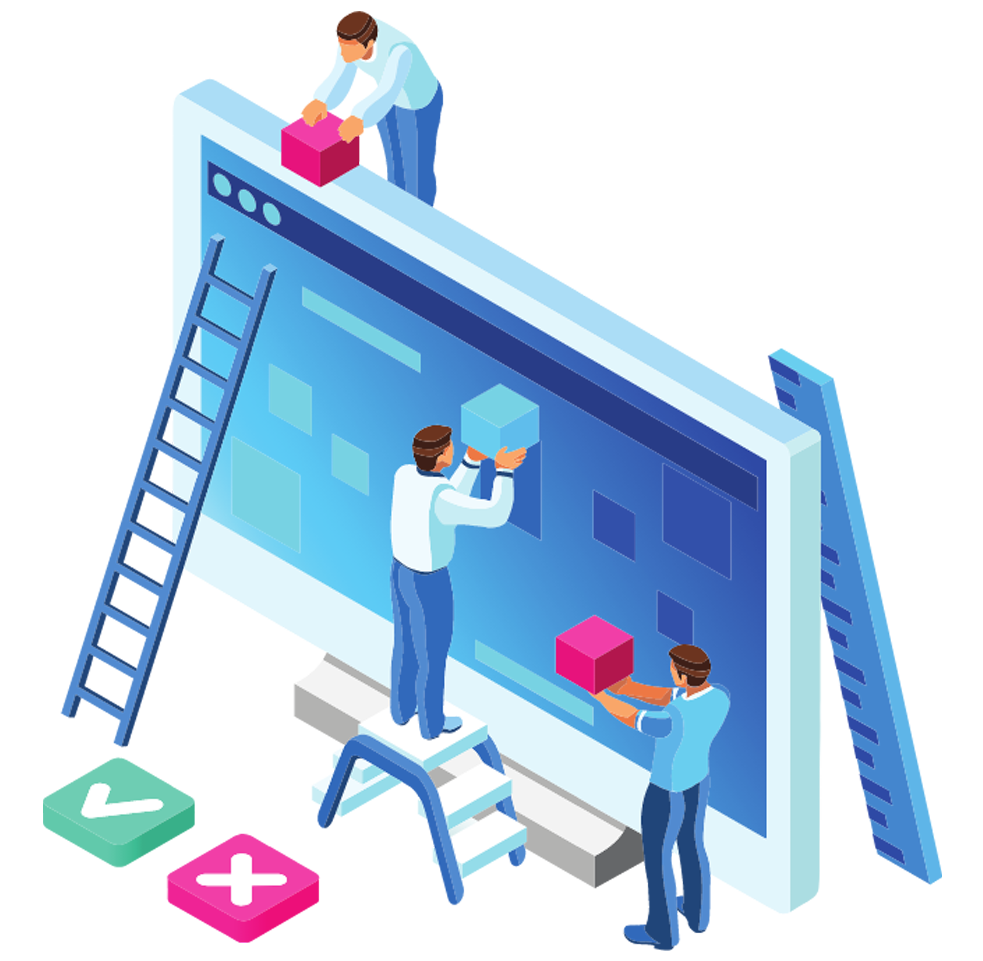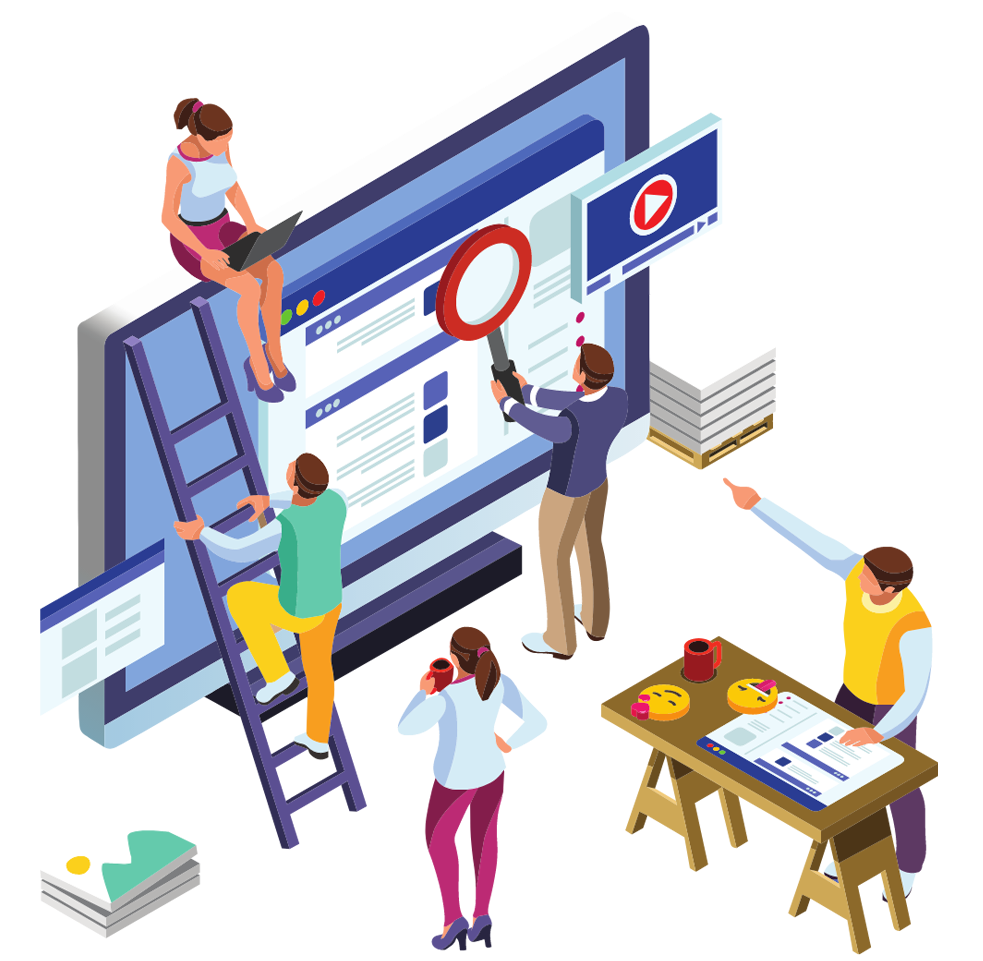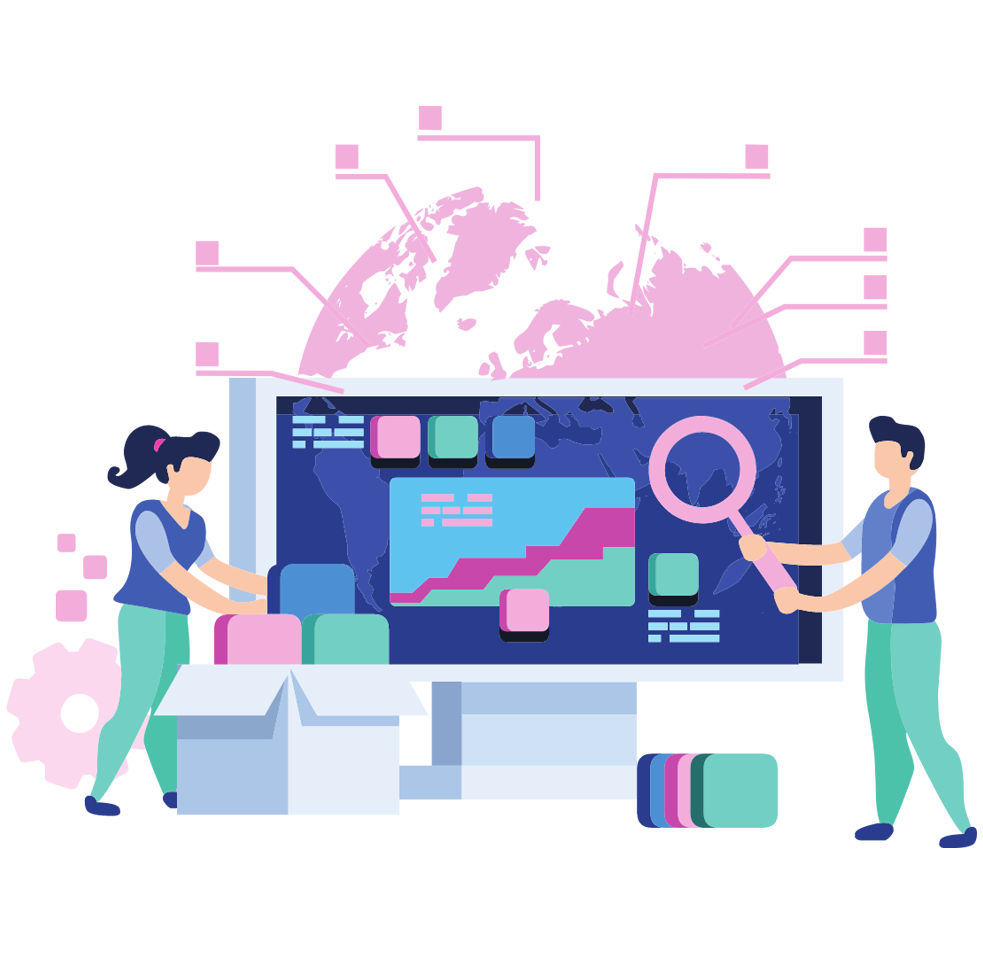Definition of the Customer Journey:
Customer Journey, also known as customer path, is a marketing term for the journey of prospective and current customers through all touchpoints with your brand. A Customer Journey is an idea that you visualize by creating a Customer Journey Map. In the form of an infographic or timeline, you depict the desired customer behaviors, as well as the emotions you want to evoke in them at each stage of the sales process.
Creating a Customer Journey may seem complicated, but in reality, it is not! You just need to take a close look at all the stages of your customers’ journey, and never lose sight of their expectations from your brand.
A well-planned Customer Journey takes into account the needs of the customers and contributes to increasing their satisfaction from contact at multiple touchpoints with your products or services. A map of such a journey shows the moments when you meet, the individual milestones in your relationship, and the feelings you want to evoke in your audience.
So it’s crucial to understand what your customers’ expectations and pain points are – so you can respond to them at every stage of the Customer Journey.
Why is it worth creating a Customer Journey?
By creating a Customer Journey Map, you can better understand the recipients of your messages – their behavior, needs, and expectations. Paying proper attention to visualization of each stage of the journey, you will plan content optimally, and determine the best methods of reaching particular groups of customers depending on which stage of the path they are on.
More broadly, it will also help you develop a marketing strategy for your brand and retain customers. Churn, the rate at which customers stop doing business with your brand, can occur even after a single negative experience, which is why it’s so important to deliver only positive experiences to your audience.
Stages of creating a Customer Journey
With a carefully planned approach to customer interactions, you’re able to determine the desired actions of all the people who interact with your brand – from people visiting your website or viewing products in your online store to regular customers and brand advocates.
Once you create a Customer Journey, you’ll see an increase in customer satisfaction and will be better able to anticipate the needs and identify potential pain points of your customers. Now, in a few steps, we’ll show you how to plan this journey – the more time you spend on it, the better the experience of prospects (i.e. leads with a high chance of conversion) and customers will be, and the path itself will be easy to follow.
Research
If you want to create an excellent Customer Journey Map, you need to know your (potential) customers as well as you can. To do this, it will be a good idea to use the many sources of knowledge available. We divide them into internal – those already in your organization – and external.
Available sources of knowledge
These include analytics of your website and social media. If you’re using a CRM system, you’ll find a lot of useful information about your current customers there, too. Moreover, if you send out newsletters, it is worth looking at statistics such as the open rate or click-through rate.
Data from your contact center will also be helpful, as it is the first line of contact with your clients – the consultants know customer needs and expectations. Useful data is also available from social media (e.g. Facebook Audience Insights) and Google Analytics. If you conduct surveys, you can also draw interesting conclusions from them.
As for external sources of knowledge, you can read industry reports and trends; research on consumer behavior, and online searches. It will also be advisable to conduct an analysis of your competitors – this can be a valuable source of inspiration.

Creating personas
You’ve certainly heard of buyer personas, which represent individual customer profiles. When creating a Customer Journey Map, it’s also a good idea to specify a few types of people whose journey you want to plan.
What criteria should you use when creating personas? Age, gender, place of residence (demographics); the industry and position of the persona; the challenges they face; their needs and requirements for your product or service. It’s also recommended to determine which customer you don’t want to deal with! The more precisely you define the buyer persona, the better.
Engage a team of several empathetic associates to come up with personas – together, you’re sure to create profiles that will match your various audience groups.

Identify customer touchpoints
Touchpoints are all moments – physical and digital – along the path where the customer interacts with the brand. They are, for example, an online or traditional media advertisement; a visit to your website or social media profile; a visit to a traditional store and interaction with your employee; attendance at an event; a newsletter, or an online review. As you can see, not all of them can be influenced by you, but all points of contact affect the customer experience.
When you want to create a Customer Journey Map, you need to think carefully about which channels you will use to communicate, both online and offline. Think which of them will work best for both parties. Maybe it’s time to create new ways of reaching customers? It’s worth remembering that a touchpoint is also when a visitor encounters a non-existent subpage or other error. A touchpoint is anywhere a person can form an opinion about your brand.
Customer Journey Map – visualization
Have you collected all the necessary data? Now it’s time to present the Customer Journey graphically! You can visualize it in the form of a chart, timeline, or even a presentation. It might also be a good idea to print out a ready project in a large format and hang it in a visible place in your office.
An aesthetically pleasing offline customer journey map will be a valuable addition to your office space and help those involved not lose sight of what’s important.

Testing and improving your Customer Journey
It’s safe to say that your work on the customer journey never ends – you can always make improvements to your Customer Journey Map based on newly acquired data. Maybe there are new touchpoints that need to be taken into account?
Perhaps you’ll notice after a while that some steps in the customer path can be improved? Try to find out what the Customer Journey Maps of competing companies look like: what touchpoints do they focus on?
There are many situations in which a potential customer interacts with the company whose services they want to use. The fact that there are so many points of contact listed above means good news for you: there are many ways to increase customer satisfaction!
The Customer Journey and the Sales Funnel
In a sales funnel, we visualize the journey from a potential customer, the so-called sales lead, to a loyal customer. When creating a sales funnel, you plan individual actions that are to convert a lead into a buyer.
For example, you create a landing page from which a person can download marketing materials in exchange for their email address. You then send the prospect an appointment suggestion or additional materials. Once the person makes a purchase, you reach the final stage of the sales funnel.
The Customer Journey refers to a person’s entire journey through the customer lifecycle. To be specific: in an ideal scenario, the journey starts with the first contact with a brand and ends with customer loyalty. There are several stages along the way, such as the gradual building of brand awareness, and interest in the brand’s products or services, and ultimately – purchase.
The final point is to become a brand advocate, which means that the customer is voluntarily promoting your brand. Of course, not every person will go through all the steps once they get on the path.
In summary, the sales funnel defines a certain stage of the Customer Journey, but is only a small part of the entire journey.

What are the stages of the Customer Journey?
There is no single valid model of the Customer Journey, but in our opinion, a division into the following stages of the purchase path will work best:
Awareness
Potential customers get to know your brand: they are exposed to ads in various media, newsletters, or other marketing efforts. SEO is also important. If you want to reach the right person with your message, the key phrases that you plan to position your brand for must match the intent of the searcher. The awareness of the existence of your product or service slowly starts to form in their mind.
Interest
In the next phase, the prospects look for information about your brand on their own and go to your social media profiles or landing pages and blog. They also consult their friends or look for information on online forums. At this stage, you can use remarketing, i.e. direct your marketing message to people who have previously interacted with your brand, so you don’t let them forget about you.
Evaluation of available options
Now the prospect is in the phase of weighing their options – will they buy your product or opt for a competitor’s solution? The prospect is comparing offerings from different companies and trying to figure out which one will best meet their needs. They will select several options to shortlist and consider before making a purchase decision.
At this stage, you have to be especially open to the customers – will they find answers to all questions on your website, thanks to which they will choose your offer? It is also worth taking care of the proper preparation of your customer service department, which can be contacted by people interested in making a purchase. The professionalism and knowledge of your consultants can play a key role in this phase of your (soon-to-be) customer’s journey.
It can also be useful at this stage to help the customer make a decision. The added value the prospect receives from comparing products can be crucial in making the final decision.
Purchase
Soon the prospect will make a purchase! They have trusted you and made a decision to buy your product. However, this is not an irrevocable decision, so now you should make their lives as easy as possible: fast and convenient shopping, various forms of payment, delivery or collection and return are an absolute must. Both stationary stores and e-commerce should be perfect in terms of UX (user experience).
The post-purchase stage
You’ve already won the customer, but you can’t rest on your laurels – after all, you want the customer to come back and make another purchase. In this phase, be sure to measure their satisfaction through surveys, create personalized offers based on previous purchases, reach them through emails, newsletters, and text messages, and create a loyalty program. Don’t let them forget about you, but make sure your customer doesn’t feel cornered.
The better you take care of your customer’s positive experience at this stage (though you should take care at every stage), the more likely they are to become an advocate for your brand.
Building a Customer Journey Map
So, you already have an outline in your head of what each stage of the journey should look like? It’s time to create a Customer Journey Map so that the journey along the path means a positive customer experience with your brand. It must take a while to create a Customer Journey map, but it’s worth investing the time to accurately fit the needs of your target audience. This will definitely translate into increased revenue for your business, you just need to get a good understanding of your customers’ expectations – current and potential.
A helpful tool
There is a tool available in the Salesforce ecosystem with which you can track, visualize, and manage the customer experience along the purchase path. This solution is called Interaction Studio, and it is part of a larger whole: Salesforce Marketing Cloud.
Interaction Studio allows companies to increase their customers’ loyalty by delivering personalized messages in real-time and interacting with them at various touchpoints both online and offline. This is made possible through marketing automation, machine learning, and advanced artificial intelligence from Salesforce.
Would you like to learn more about Salesforce Interaction Studio and other solutions from the Salesforce world? Contact us and schedule a free demo!







































